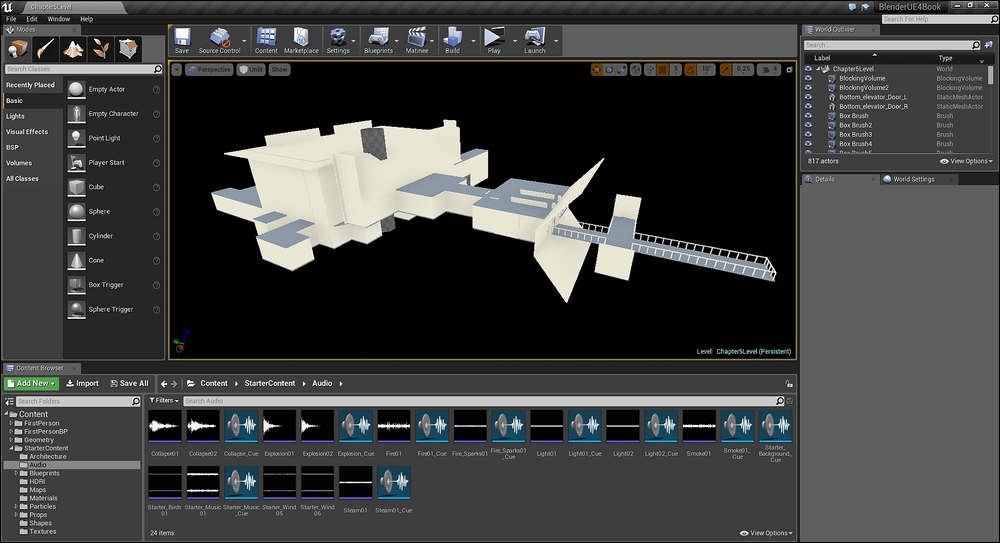When building game levels, understanding how to use the tools is important, but it is not the only thing a great level designer needs to know. The game level communicates with the player, telling them about the story and the setting, but also about goals, options, and other game information. I once heard a great presentation by a designer who had worked for many years building levels in the game industry. He mentioned that a player should be able to navigate a level with the game HUD turned off, relying only on the clues they find in the design of the level. For the player to be able to do this, the level must be built cleanly and efficiently, using clear sight lines and vistas to direct the player to the end goal. Since hearing this, I have attempted to bring these ideas into every level I create.
Let's talk about some of these points:

A bird's eye view of our space station level
Building levels that are clean and efficient sounds great, but what does that really mean? A clean level is free of distraction and extra areas that serve no real purpose to the story, environment, or level goals. Players can find these areas confusing and spend time searching for their importance when really there isn't any. When designing and building our levels, always ask yourself if each section of the level adds something to the player experience or if it is just a distraction there to add complexity to a level. Efficiency is important as well. Game design has many constraints: hardware constraints such as memory and processing speed, budget constraints, time constraints, and production constraints. It is important as the designer to maximize how you use your resources to create the most engaging player experience possible. For small game developers like ourselves, this can mean spending our time efficiently and finding ways to cut corners without sacrificing quality:

Overlooking the marketplace. What could we add outside those windows?
When building a level, it is also important to take into account what the player is seeing while navigating each section. The player's sight lines present them with options for navigating the spaces we design and we can use them to steer players through the paths that we intend. This will ensure that the player experiences everything in the way that we designed it. In our space station design, we restricted the paths the player can see as they progress through the level. When they enter the station, they are only aware of one path into the security checkpoint where they experience our scripted event. They are then provided with a sight line that leads them to a beautiful vista of the outside environment and the station's marketplace.
Here, they are free to do a bit of exploring of all they have seen:

Exploring the marketplace. A great space for players!
Our player is also shown the ultimate goal of the level, the smoldering remains of the broker's shop, ready to be explored at their leisure. To sum things up, sight lines are a powerful tool that can control a player's progress, present them with options, and empower them to reach the level's goal.
Now one more reminder: as you whitebox the level, remember to have family, friends, and your intended audience playtest it for you. Their insight is valuable and can increase the chances of your game being successful!
